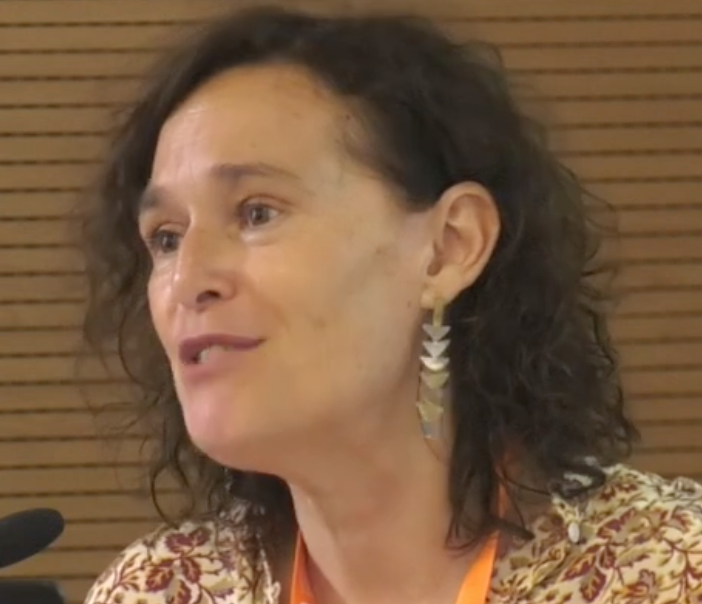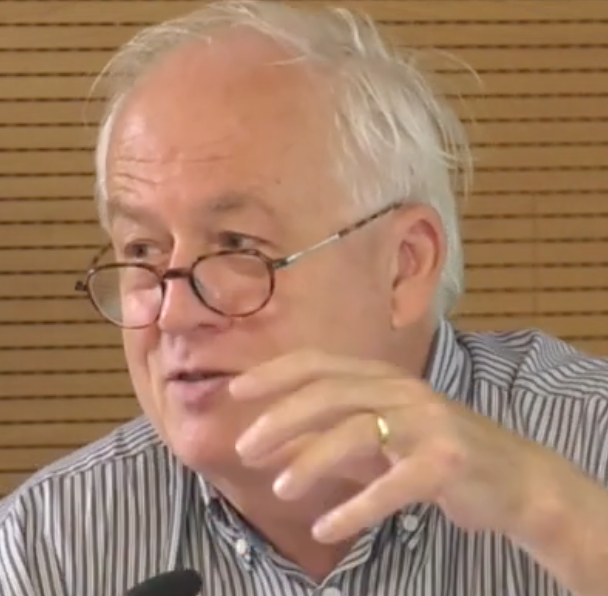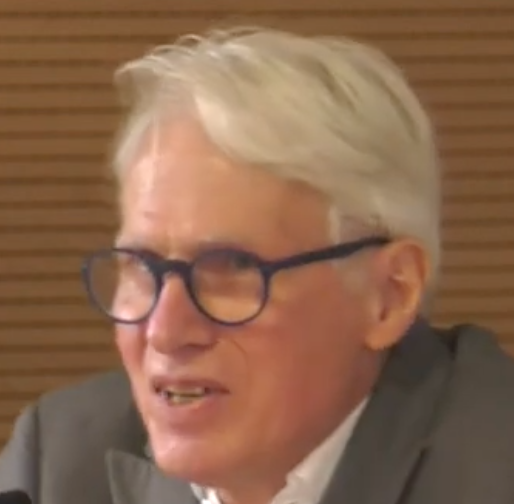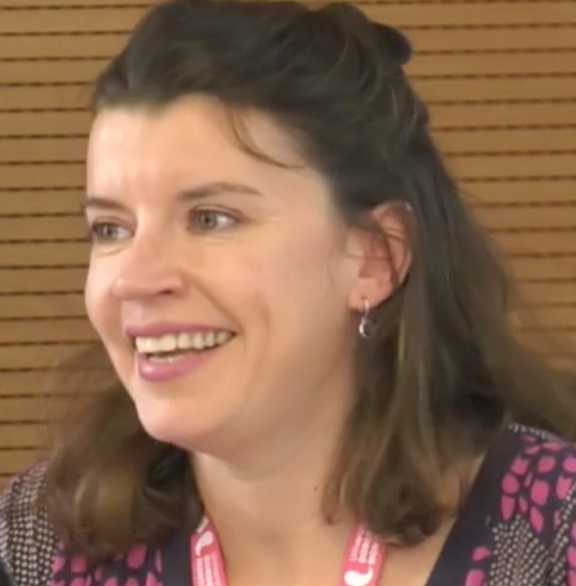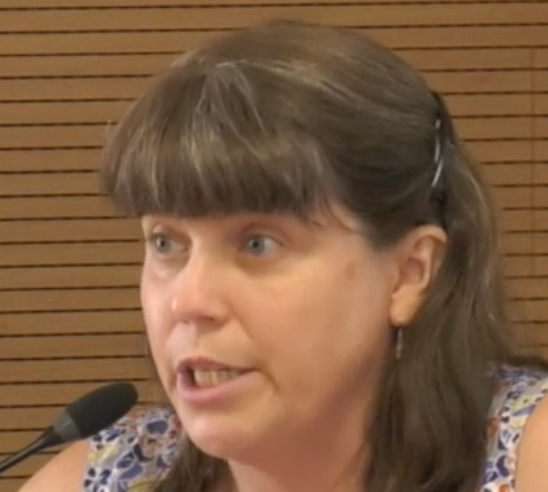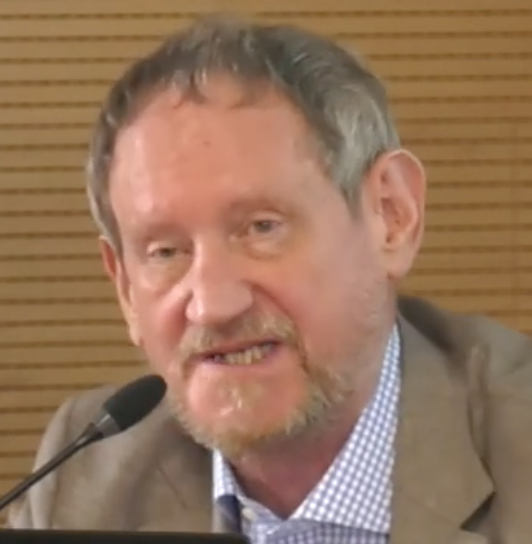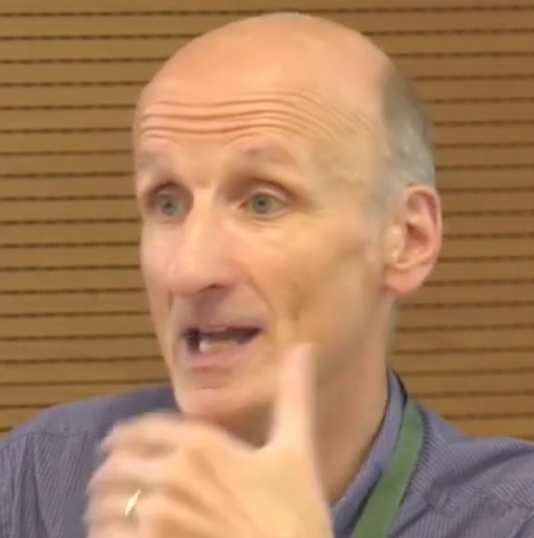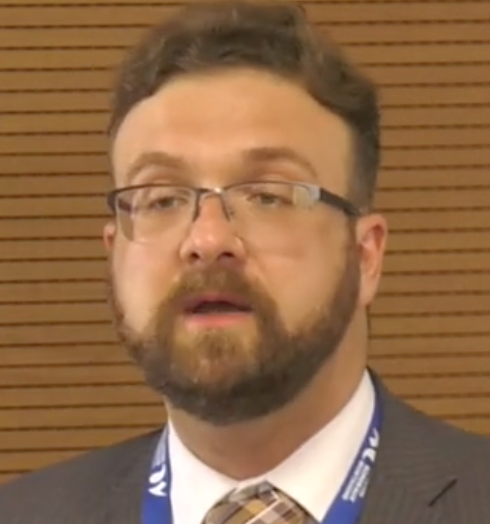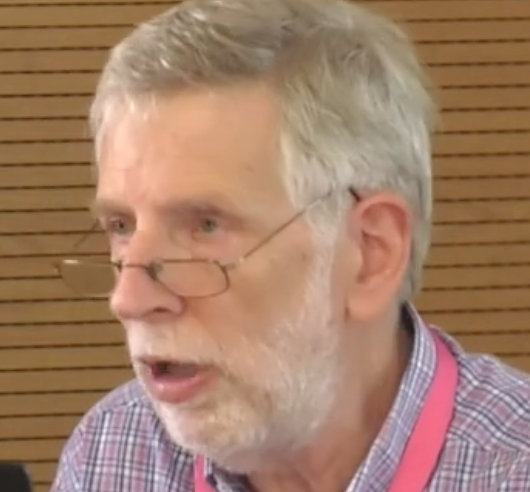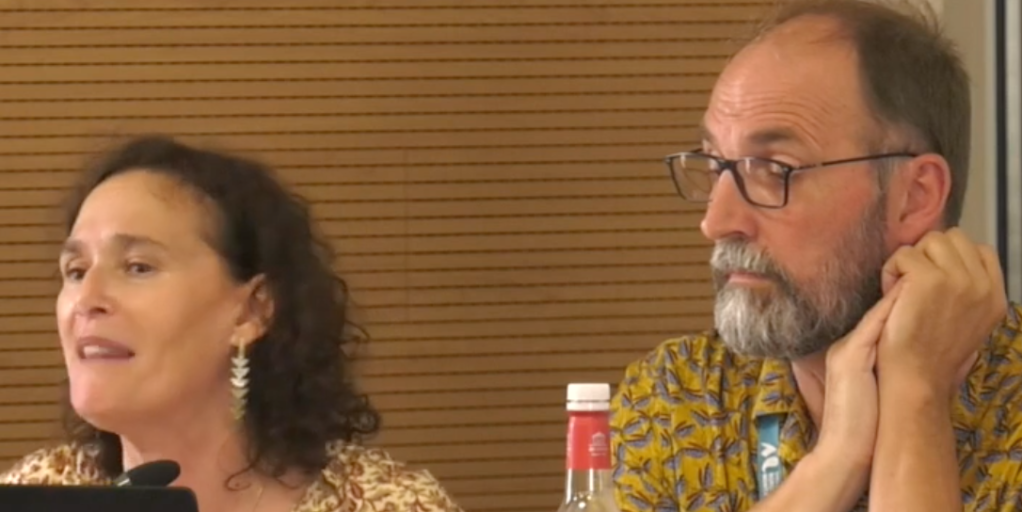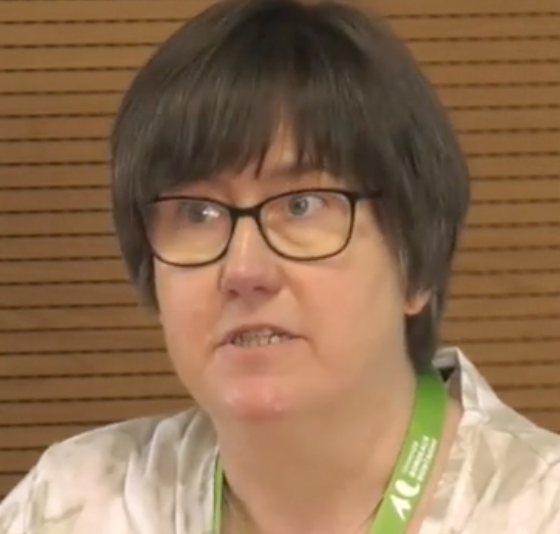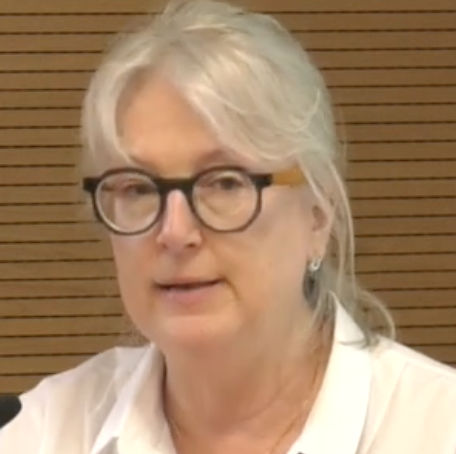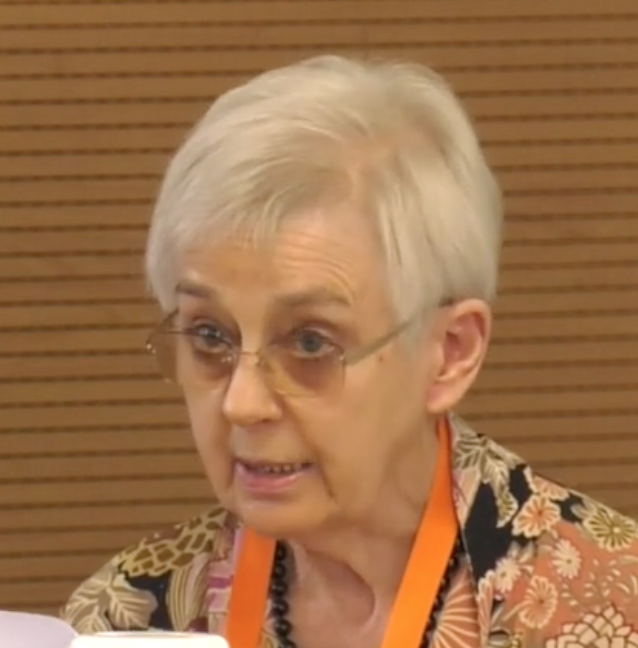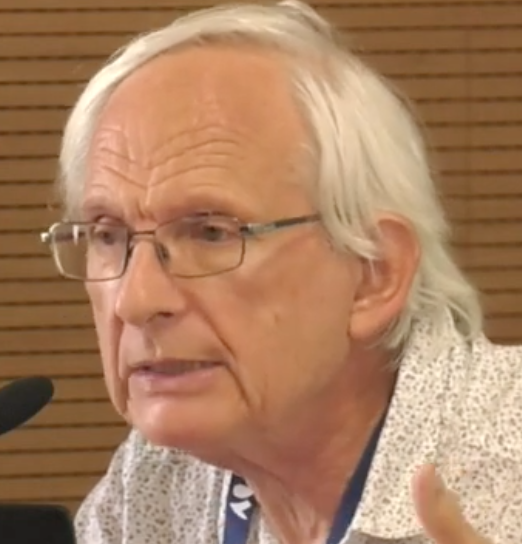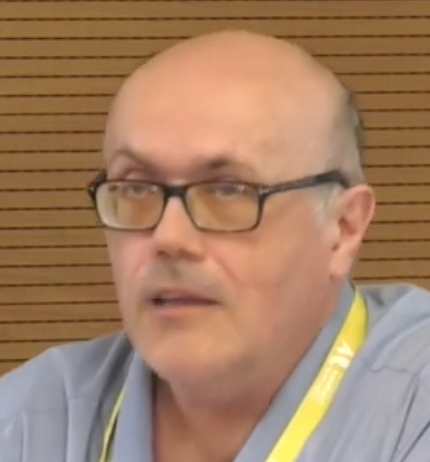Archive for the ‘Weir of Hermiston’ Category
RLS on his father
Father and son relationships are often difficult, and the Stevenson family was no exception. For an idea of how this may have influenced RLS’s writings we need only think of the overbearing father figures in his fiction.
An interesting document in this regard is the record of his father’s ‘faculties’ (bodily and mental characteristics and aspects of personality) in the copy of Galton’s Records of Family Faculties in the library at Vailima and now at Yale, reproduced in Julia Reid’s Robert Louis Stevenson, Science and the Fin de Siècle:

Reid says this is ‘in Fanny’s hand’ but it seems clear to me that it is by Stevenson himself. Take the word ‘dark’:

and compare it with the same word in ‘Memoirs of Himself’ written in 1880:

Here we see the very typical R-shaped ‘k’ and the inverted-v ”r’. Other typical features (not shown here) are the lead-in line to the ‘f’ rising to a spur and the same in the case of the ‘b’ but the ‘p’ starting with a hook. Having studied Stevenson’s handwriting for some time, my opinion is that this is written by him not Fanny. This only makes the entry more interesting.
An interesting description
The description of ‘Character and temperament’ begins ‘choleric, hasty, frank, shifty‘. The adjective ‘hasty’ must be used in the sense of ‘quickly roused to anger; quick-tempered, irritable’ (OED). It is interesting that we find the same adjective applied to a father in Kidnapped
his gillies trembled and crouched away from him like children before a hasty father.
Kidnapped, ch. 23
Hastie is the first name of the white-haired Dr Lanyon in Strange Case of Dr Jekyll and Mr Hyde and he is quick tempered in his outbursts against Jekyll (‘scientific balderdash’, ‘I am quite done with that person’), a habit of thoughtless and absolute rejection that makes him similar to Jekyll (who uses the same words as Lanyon when he twice repeats that he is ‘done with’ Hyde).
The last adjective is ‘shifty’. I don’t think that can mean ‘dishonest, not to be depended on’ etc. There’s no entry for the word in the Dictionary of the Scots Language but I can imagine it had a special use north of the border from two OED citations:
1859 […] The canny, shifty, far-seeing Scot
1888 W. Black [writer of the kaleyard school] In Far Lochaber xxiii She was in many ways a shifty and business-like young person
So it could have the positive meaning of ‘well able to shift for oneself’. But context is very important in determining meaning and here the other three adjectives are about the quality of interactions with others rather than such a practical ability, so perhaps we should search further. Some help comes from Stevenson’s use of the word in his essay on John Knox:
He was vehement in affection, as in doctrine. I will not deny that there may have been, along with his vehemence, something shifty, and for the moment only; that, like many men, and many Scotchmen, he saw the world and his own heart, not so much under any very steady, equable light, as by extreme flashes of passion, true for the moment, but not true in the long run.
Here ‘something shifty, and for the moment’ is associated with ‘vehemence’ and ‘passion’. It looks like a ‘shifty’ person is someone who changes position and beliefs as his passions dictate. Could this be the authoritarian person who can quickly justify any action?
Some more evidence of Stevenson’s use of the word is found in Weir of Hermiston (ch. 2), where the elder Kirstie has only the company of the maidservant
who, being but a lassie and entirely at her mercy, must submit to the shifty weather of “the mistress’s” moods without complaint, and be willing to take buffets or caresses according to the temper of the hour.
Here ‘shifty’ is associated with the changeable and unpredictable moods of an authoritarian person and this might fit Thomas Stevenson better.
Finally, in the company of the other three adjectives ‘frank’ probably doesn’t mean ‘open, sincere’ but more ‘candid, outspoken, unreserved’.
New Edinburgh Weir of Hermiston published

Robert Louis Stevenson, Weir of Hermiston, ed. by Gillian Hughes, The New Edinburgh Edition of the Works of Robert Louis Stevenson (Edinburgh: Edinburgh University Press, 2017).
Published 5 June 2017. £80 (and for around £62 from booksellers associated with Amazon)
.



See also Gill Hughes’s thoughts on working from Stevenson’s manuscripts in the preparation of this volume: Following the author’s hand
Following the author’s hand
A post contributed by Gill Hughes
editor of Stevenson’s Weir of Hermiston in the New Edinburgh Edition

A series of speculations
It is in working on a manuscript that an editor comes closest to the author, and in the case of Weir of Hermiston the manuscript record is unusually rich and full, comprising a wealth of draft material in Stevenson’s own hand as well as a final (though not finished) manuscript dictated by him to his step-daughter and amanuensis, Belle Strong. Following the author’s progress exerts an irresistible charm.
Stevenson himself, that great collaborator, plainly understood the attractions of watching the writer at work, for he invites the reader close to the narrator in the final text of Weir of Hermiston. The narrator’s account of the unpopularity of Frank Innes at Hermiston, for example, proceeds as a series of speculations, a gradual approach to the most plausible explanation.
Firstly the narrator posits that Frank’s technique of depreciation by means of a confidential conspiracy fails because of the admiration felt by the estate folk for both Lord Hermiston and Archie himself. Subsequently he reconsiders, deciding that in Frank’s condescension as displayed to Dand Elliott, ‘we have here perhaps a truer explanation of Frank’s failures’.
The reader is invited to participate in the narrator’s working out of the situation, the gradual evolution of an accurate apprehension.
A succession of drafts.
This process forms a curious parallel to the way in which Stevenson’s draft manuscript revisions operate. A situation envisaged by the author is reiterated and reassessed in a succession of drafts until he is satisfied with his representation and only then does he move forward again in his story. None of the draft material for Weir moves very much past the point at where the final manuscript breaks off, but there are multiple surviving attempts at earlier key passages—at least five, for instance, for the start of the first chapter where Stevenson was getting his narrative underway, and several for subsequent key points in the narrative that required peculiar care.
Chief among these are the interval between the execution of Duncan Jopp and Lord Hermiston’s confrontation of his rebellious son, and the forming of a bond between Archie and the younger Kirstie after their initial sighting of one another in Hermiston kirk. Stevenson’s revisions show how very far he is himself from the leisurely speculations of his narrator. He moves always from the explicit to the implicit, cutting out details that would make any writer of realist fiction proud. His draft description of Archie’s motherless childhood in the house in George Square, for instance, sticks in the memory:
That was a severe and silent house; the tall clocks ticked and struck there, the bell rang for meals; and beyond these periodic sounds, and the clamour of an occasional deep drinking dinner, it was a house in which a pin might be heard dropping from one room to another. […] When my lord was at home, the servants trembled and hasted on noiseless feet, the child kept himself trembling company in the tall rooms, and had but one concern—to avoid his father’s notice. (Morgan MA 1419, f. 17)
The child’s isolation in the tall rooms of a house could not be more vividly portrayed and yet Stevenson ultimately judged it inessential to the novel.
An editor’s experience
In editing Stevenson’s Weir of Hermiston one is brought close to a narrator who can seem prolix and provisional, an amiable and indulgent fellow-traveller through the story, but standing close beside him is a most painstaking and most uncomfortably ruthless artist. ‘That’s wonderful!’ I wanted to say to Stevenson of this passage in his draft material and of that. ‘Couldn’t you have left that bit in?’ But he pared back his own imaginative fecundity with an unsparing hand, and here and there in the editorial material I’ve tried to indicate where he has done it.
Scribner’s and Weir: a premature ‘puff’
This post is contributed by Glenda Norquay, presently working an edition of St. Ives for the Edition.
.
In my last few days at Princeton I found an interesting little twist to the tangled narrative of Stone & Kimball and Scribner’s and the competition for his late fiction.
So sure were Scribner’s that they were going to get the publication rights of Weir of Hermiston in the United States that their editor, E.L. Burlingame wrote to Sidney Colvin on the 5 September 1895:
There is one other great kindness that you could do us in this matter and that I think would be a great factor in the success of the publication. You have mentioned in your letters that both you and Henry James who had read “Weir of Hermiston” thought it beyond comparison the finest thing that Stevenson had done. If you were willing to let us quote you both as holding this opinion, and if you care to express it in words which imply a comparison, to let us quote you as saying that it reaches at least his highest level – I can think of nothing that would so quickly lead to the favorable recognition of our announcement of it. “The Fables”, the paper of extracts from the “Vailima Letters”, and perhaps the beginning of “St Ives” all preceding it, and two of them being comparatively minor things (of course I do not speak of the “Vailima” book) it is most important for us to prevent in the public mind the idea that this is a small matter, and to make known the truth that it is really the one upon which his ambition was specially centred during his last two or three years.
(1894 November 15 – 1895 September 13; 1894 November 15 – 1895 September 13; Archives of Charles Scribner’s Sons, Box 901; Manuscripts Division, Department of Rare Books and Special Collections, Princeton University Library.)
While the evaluation of the other works as ‘small’ may be questioned (especially by the editor of one of them), the publishers were clearly aiming to make as much of Weir as they possibly could. Yet by the end of the year (9 December) Charles Scribner has this to communicate to Lemuel Bangs, their London representative:
There is nothing further to record about Stevenson’s story; it has been sold to the Cosmopolis and Stone & Kimball will publish it in this country. Baxter’s contract with Stone & Kimball knocked us out … but it was a high price to pay for an incomplete story and all things considered perhaps we are well off without it.
(L. W. Bangs; 1893 February-1900 January; Archives of Charles Scribner’s Sons, Box 972; Manuscripts Division, Department of Rare Books and Special Collections, Princeton University Library.)
As my earlier blog noted, however, this did not diminish Scribner’s eventual pleasure in gaining control of all Stevenson’s work in the U.S..
Weir of Hermiston MS in Philadelphia
This post is contributed by Glenda Norquay, presently working an edition of St. Ives for the Edition.
.
Free Library of Philadelphia
image: Quondam – a virtual museum of architecture
.
While in Princeton I took a day’s excursion to The Free Library in Philadelphia to look at the manuscript fragment from Weir of Hermiston that I had uncovered through scrolling through their rather labyrinthine finding aid. The Rare Books collection holds a surprising amount of RLS, as Richard noted in his previous post (Stevenson MSS in Philadelphia). I could, however, only secure a two and a half hour slot in their tiny (two desk) reading room. The Free Library building on Vine Street is wonderful: enormously grand and imposing both outside and within, but also clearly a very well-used building, with a range of public reading rooms and plenty of people using them.
The Rare Books collection is housed on the third floor, accessed only by lift, and I had to wait some time (standing under the scrutiny of a video camera) before someone came to answer my call on the bell. The reading room is, as they said, a city block’s walk away from the entrance. The staff however could not have been more welcoming or helpful.
‘Weir’ fragment
I was given space, time, and a magnifying glass with which to study the single sheet fragment, folded into four pages. The pages are stained and creased, once folded into a pocket-sized package. The content is draft of a key episode in the novel : the ending of the chapter entitled ‘A Leaf from Christina’s Psalm-Book’, and details Kirstie’s return from meeting Archie and her mixed feelings of guilt, pleasure – and anxiety when Dand notices her pink stocking. I will leave it to Weir’s editor, Gill Hughes, to report on the significance of the pages but it is clearly a useful addition to our understanding of the novel’s composition.
FLP Rare Books Department
Time, of course, flew past in the reading room but just before the Rare Books Department was closed for the day Reference Librarian Joseph Shemtov very kindly took me for a tour of their magnificent William Elkins room. As their website notes:
The bequest of William McIntire Elkins, who died in 1947, brought his entire library, containing major collections of Oliver Goldsmith, Charles Dickens and Americana, as well as miscellaneous literary treasures. With the Elkins bequest came the gift of the room itself with its furnishings, through the generosity of his heirs. The installation of the 62-foot-long paneled Georgian room in the third floor of the Central Library at Logan Square took place over the next two years, and the Rare Book Department opened in 1949.
I was able to see Charles Dickens’ desk, the wonderful collection of books, and even the stuffed raven owned by Dickens that had inspired Edgar Allen Poe. The Library runs a tour of the room once a day.
Although it can be a challenge to navigate their website, the Free Library is well worth a visit. I was even able to purchase an Edgar Allan Poe finger-puppet with which to converse in those evenings after the Princeton Reading Room closes. Have I been here too long…?
Stevenson MSS in Philadelphia
A few days ago, Glenda Norquay, researching in Princeton for her edition of St. Ives, came across the Literary MSS finding aid of the Free Library of Philadelphia, and saw that it contains, unexpectedly, sixteen RLS manuscripts. A few of these were catalogued by the Library when Roger Swearingen’s compiled his Prose Works of Robert Louis Stevenson and are found there (the Earraid sketchbook, the fragment of Sophia Scarlet), but this new finding aid (published 2012) reveals a number of items (subsequently acquired or catalogued) that came as a complete surprise:
Autograph manuscript signed (fragment) of Weir of Hermiston. 4 pages
Two copies of Deacon Brodie with corrections in Stevenson’s hand
Corrected proof sheets of Memories and Portraits (‘1 volume’—no information on the number of pages; could this be proofs for the whole volume?)
South Seas material, from “Part V. The Gilberts. XLVIII. Butaritari”, 2 pp.
MS of part of ch XIX of The Wrecker (probably precede the 5 leaves at Princeton), 19 leaves, making this the most important fragment of MS material of this work
Corrected copy of Father Damien
Fragment of Weir of Hermiston, 4 pp.
Autograph manuscript signed (draft) of several verses and revisions, with a sketch, 1 page (“Previously identified as intended for A Child’s Garden of Verses, but unpublished there.”)
A finding aid to finding the finding aid
Archive material may be fully available and exhaustively catalogued, but sometimes the catalogue (or the MS finding aid) is very difficult to find. When Gill Hughes told me about Glenda’s discovery, I went to the home page of the FLP and searched for ‘special collections’, ‘rare books’ and manuscripts’—no joy. Then I tried the green side-tab ‘Explore’, and then the top-tab ‘Find a location’—but for all my exploration, never a thing did I find. So I tried ‘Programs and Services’ (could that cover library departments?) and finally found ‘Rare Books Department’. Hooray! So I clicked on that, clicked on ‘Collections’ and then on ‘Literature – Learn more’ which contained links to… only two finding aids: Dickens and Poe. No mention of Stevenson. I’d reached a dead-end.
Research in these labyrinths his slaves detains…
In the meantime a kind friend sent me the pdf, but I was determined to find the dang thing myself. This is how I did it: I clicked on Ask, made a desultory stab at Browse or Search FLP Knowledge Base (who knows?), browsed, searched, then found and clicked ‘Rare Books’ (I’d been given a help: Gill had told me the department was called by that name); this took me to Rare Books FAQ, where FAQ-18 is ‘Does the Rare Book Department have any finding aids?’ The brief answer to this has a clickable link which—unlike that decoy Rare Books page with only two finding aids—had the whole list. I’d finally reached the centre of the maze with the champaign luncheon! And there it was: Literary Manuscripts Collection, readable online or downloadable as pdf.
Charles Baxter returns home with Manuscripts from Vailima
The following post is from Gill Hughes, editor of the EdRLS volume of Weir of Hermiston, (with contributions from Glenda Norquay and Richard Dury)
.
Charles Baxter travelled to take the first two volumes of the Edinburgh Edition to his old friend but arrived too late, on 31 January 1895. He then stayed a couple of months at Vailima going through Stevenson’s literary papers before travelling back via San Francisco. In Chicago he agreed to be interviewed by a local newspaper reporter; as this interview seemed to be of interest for the story of the publication of Weir of Hermiston and St. Ives, my daughter Rachel Sweet very kindly looked up the number in the Chicago Public Library and has sent me the transcription printed below.
One thing that puzzles me is that, from letters I saw at the Beinecke, Fanny and Lloyd seem to have been offended by something Baxter had said to newspapers in Chicago but I can’t see anything in this to offend them (though Andrew Lang certainly would not have been too happy about it, had he seen it).
Has anybody any ideas? Is it simply that Baxter is putting himself prominently as the person to get Stevenson’s work published and an Edinburgh memorial arranged, rather than the widow and step-son perhaps?
Another point of interest is the ‘series of history letters written to his small friend, Austen [Austin] Strong’, which Baxter expects will be published by the Youth’s Companion (though someone in England claims some right to publish them—if that is the meaning of ‘England, selfish as usual, wants it badly’; possibly ‘England’ is less amenable to the auctioning of Stevenson’s works, a practice which Baxter favoured — at the same time perhaps Baxter was trying with this comment to encourage the Youth’s Companion to offer a good price).
At least one of the history lessons exists, probably the first of the series, in the Huntington Library (HM 2393; it starts “The study of history is to learn how the world has moved and changed in former ages—how men have come together and separated and wandered”).
The Youth’s Companion was published by N. Willis of Boston between 1871 and 1929. There must be some chance that Baxter did indeed place the MSS with this periodical. Unfortunately I haven’t been able to locate a library with a collection that covers a likely period (say, 1895-97). There is an Index to the Youth’s Companion, 1871-1929, 2 vols (Metuchen, NJ: Scarecrow Press, 1972), but I haven’t been able to locate that either.
Does any reader of this blog happen to know of a library that has either the magazines or the index?
==============================================================
[From Chicago Evening Post, 25 April 1895]
LEFT BY STEVENSON.
————————————————————————
Charles Baxter Here with Several Valuable Manuscripts.
————————————————————————
SOME UNFINISHED STORIES.
————————————————————————
The Writer’s Literary Executor Talks of Other English Poets—First Editions of Lang.
————————————————————————
Charles Baxter, W. S. of Edinburgh and London, has arrived in Chicago from San Francisco.
“I am, or, I am sorry to say, was, the life-long friend and legal and literary agent of Robert Louis Stevenson,” said Mr. Baxter today to a reporter for THE EVENING POST. “On Dec. 7, in fulfillment of an old promise, I left London to pay him a visit at Brindisi. [should be ‘…visit. At Brindisi…’] I received a letter full of joyous anticipation of our meeting. At Port Said three cablegrams told me that he was dead. From what I now know I believe the terrible blank to me has been felt as a terrible blank by the civilized world. The French literary men especially have mourned his loss. I remained two months at his home in Samoa. As his executor, appointed along with Henry James, Jr., the novelist, who felt unable to act, I have been able to arrange his affairs. His family was kindness personified. I am now on my way back to his, and my, old country.
“Yes, I am taking with me several unpublished works, the first of which will be “The Vailima Letters,” being a species of diary sent monthly to his best friend, Sidney Colvin, keeper of the prints in the British Museum. Mr. Colvin introduced Stevenson to the world of letters and has ever since been his warmest admirer, severest critic and truest friend. Great competition has taken place for this book. It will appear in book form only, in England and America.
Two Uncompleted Works.
“Then I have “St. Ives,” which wants two chapters of completion. These explain the plot, but we shall leave the explanation, which is known only to one living person, as an exercise for the ingenuity of future readers. A splendid fragment (about 50,000 words), complete in itself, will be published as the first episode of what was to be his masterpiece, “Weir of Hermiston.” “The Great North Road” is a minor tale, of romantic interest, comprising about 15,000 words. A small volume of “Fables,” long ago contracted for, goes to the Longmans of London. And a charming little series of history letters written to his small friend, Austen Strong, suitable for children, will, I expect, be published by the Youth’s Companion. That is, if we arrange terms. England, selfish as usual, wants it badly.
“Stevenson’s biography will be written by Sidney Colvin, and I know he will approve of my saying that any letters of interest written to persons in the United States will be thankfully received and acknowledged by him and carefully returned. Certified type-written copies will do equally well.”
“Now, Mr. Baxter, as to your own future movements?”
“I go to-night to New York, and thence straight to Washington.”
“What about Samoan politics?”
“I decline to discuss politics.”
Mr. Stevenson’s Successors.
“Is there any successor to Stevenson as a stylist in English letters?”
“In prose—no. In verse, in which he was conscious he took but a secondary place, I will name three—Gosse, Andrew Lang, LL.D., and William Ernest Henley, LL.D., [this doctorate is a mistake of the journalist’s] all intimate friends of Stevenson. Dr. Henley is masculine and vigorous, full of new thought and invention in rhythm. He introduced the lighter French forms of verse into our country about eighteen years ago. He has had many imitators—few successful. He is my intimate friend. I reckon Poet Henley will live fifty years.
“Gosse is refined, cultivated, tuneful and sings a sweet note; but sometimes he recalls the voice of a past or present songster. He will live twenty-five years. Dr. Lang is the most curious problem of all. Industrious to a miracle, he envelops the world of broadsheets in that which looks like thought, but, as far as I can make out, is simply the result of an incredible memory. Not dull, not smart, far from a dolt, equally far from a genius, he, like a once famous rivulet, goes on forever. It was but last night I heard it complained that the English-written journal was being assimilated by Dr. Lang, and this, mind you, all over the world. His ‘first editions’ are innumerable. But now I am tired so I must really go to my friends, so you will excuse me. Before I go, however, let me give you one little sketch from real life.
“About six months ago I was travelling in the evening by a suburban train in the near neighborhood of London. A little vulgar man, with a large head and a sad eye, sat opposite. The carriage was what we call in England third-class. I was reading the first number of the ‘New Review,’ in which I held some very valuable 7 per cent preferred shares credited by my friend, W. E. Henley: I recommend them as an investment to some of your capitalists.
“ ‘You are literary, sir?’ said he, with a gasp. ‘I can read and write, but not spell,’ said I, severely. ‘Like first editions?’ said he. ‘That depends,’ said I, to cut him short. ‘Will you look at some of mine?’ he urged. ‘All right,’ I replied. The train stopped, and, seizing my arm, he rushed me down a dim village street, through a small grocer’s shop, into a back parlor, lined with shelves, each one of which was crowded with books. ‘Well, my man, what’s all this?’ I asked, really somewhat taken aback. ‘Every one of ‘em Andrew Lang’s first editions,’ he whispered, gazing at me with wide-pupiled eyes.
Andrew Lang’s First Editions.
“Then I realised the sorrow and the haunted look of my little grocer, but presence of mind came. ‘How much?’ said I ina low tone. ‘Two and sixpence per volume, taken by the load; dirt cheap,eh?’ says he anxiously. ‘Yes,’ I replied emphatically, ‘a magnificent investment. Take good heart. In five years they will be worth only one shilling and sixpence. Do not despair! Tie them up for 100 years. Your great-great-grand-children will then be lord mayors, marquises or earls and these will be priceless, because unique, the only known examples of Poet Andrew Lang.’
“Thank God, sir; thank God. Tell the wife that! She’ll be kinder, I think! What may I offer you to—’ ‘Nothing, man! In the name of heaven.” and I fled through the little shop, up the terrace, under the great railway bridge, and at last, alone, I sat me down and sighed beside the great moaning river and mused for hours on the futility of human aspiration.”
Mr. Baxter, with a cheery nod, remarking he was getting thirsty once more, left.
“By the way,” he shouted merrily as he passed up the pretty staircase of the Victoria. “I am just cabling Major Pound, in New York, to arrange a meeting of a few Scotsmen and women to hear me read Stevenson’s Scots poems in the vernacular, several addressed to me. Proceeds to put up a memorial in Edinburgh. I think it a good idea. What do you say? Good-by.”
